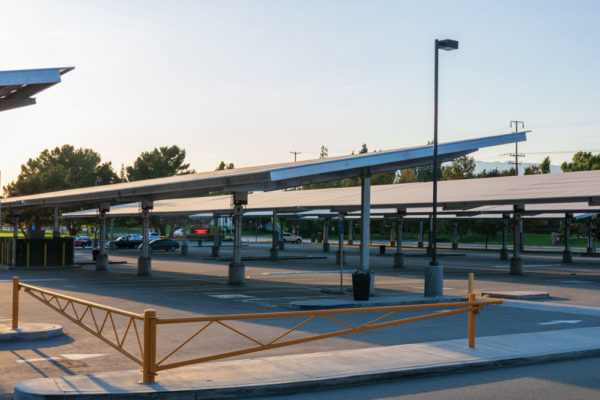S2 and E2 parking lots to close for construction between October and December
Citrus College closed the third phase of a five-year sustainability plan. As part of the plan, solar carport stalls will be installed on the southwest of campus.
M Bar C construction was awarded a $1.8 million contract with Citrus College after a bid walk in June.
M Bar C director of strategic accounts Neil Bradley said construction would begin between late October and mid-November and progress to early 2020.
M Bar C marketing coordinator Kelsey Webster said her company’s innovative spirit made them a leader in solar shade structures.
“Back in 1975, we opened just doing carports,” Webster said. “You’ll see them at a lot of apartment complexes. There’s just shade. There’s not solar on top. As time has gone on and that’s an opportunity we now have access to, putting solar on top of car ports, it was a natural progression.”
Solar panels will not be installed on the southern slopes of the football stadium as previously discussed by facilities. Trees lining the football stadium will not be cut down.
“That plan was an alternate and that one was cost prohibitive,” said Fred Diamond, facilities supervisor.
Diamond said construction and energy storage were strategically planned to maximize state subsidies.
For energy savings, the college gets 24 cents per kilowatt/hour.

Facilities also benefits from grant money for reducing the college’s energy demand through retro-commissioning and transitioning to LED lightbulbs.The college received a small rebate for energy efficient light bulbs. The rebate is no longer available
California Energy Commission offered a $250,000 grant to the college to incentivize conservation improvements campus wide in 2014. Many of the improvements to campus facilities benefited directly from successive grant disbursements . The college kept thorough records of all its energy usage to show compliance with the commission’s plan, and made them eligible for more grant money.
Bradley said in an email the campus’ 1,416 panels can generate 566.4 kilowatts of power.
Only some of the solar power generated is during the day is stored. Some of the power is unusable during other high usage periods.
Though the solar generated power for the college is far below its energy demand, the college negotiated a deal with Southern California Edison to reduce its energy cost in exchange for the solar power generated.
Diamond said he suspects the next campus energy projects will involve dramatic changes to the state electrical and energy codes.
He stays informed of energy opportunities by listening to statewide facilities management team he is part of within the Community College Chancellor’s office.
“We get all the scoop,” Diamond said.


